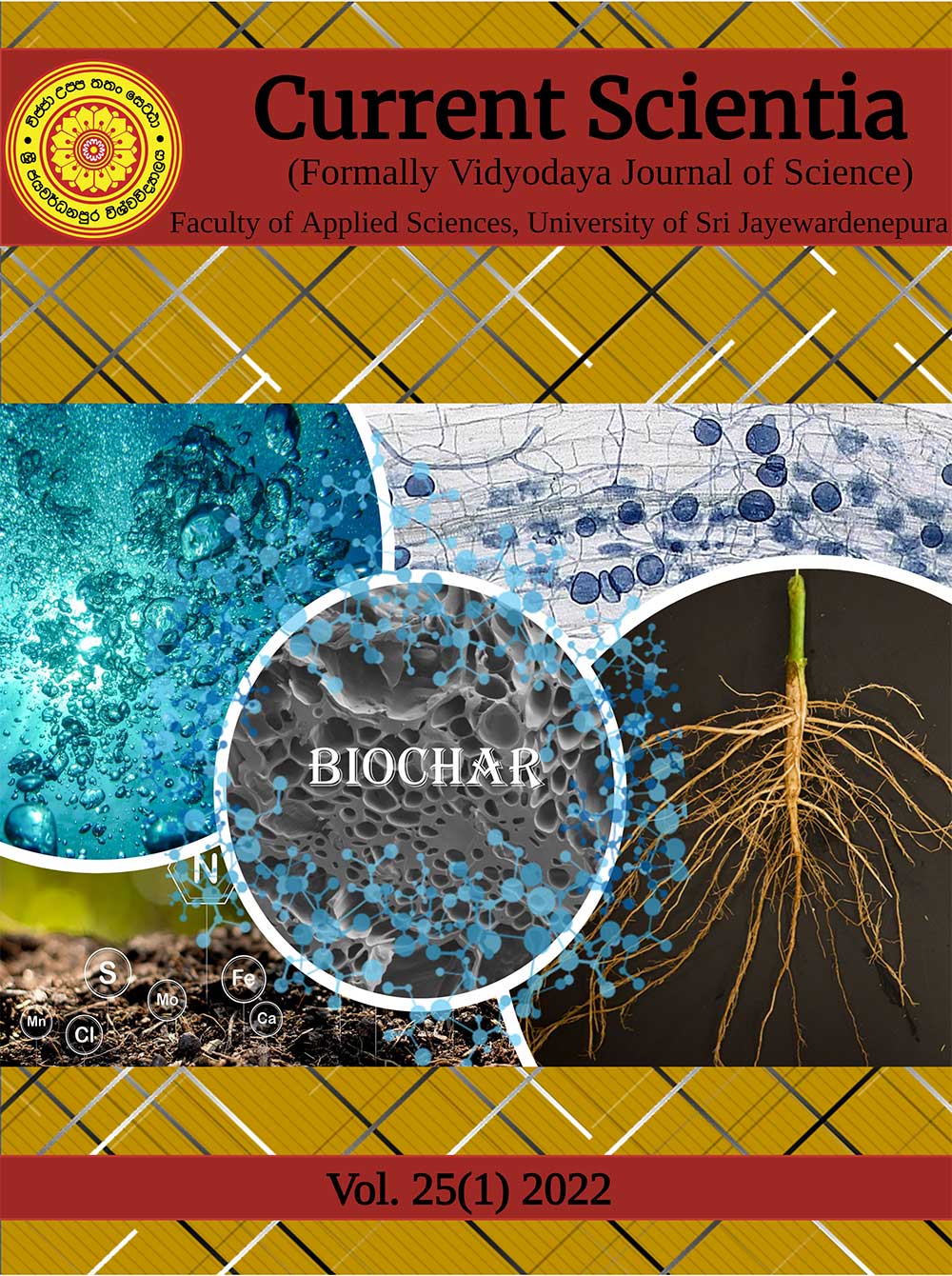Aqueous Rechargeable Batteries for Green Energy Storage: The Zinc Ion Chemistry
DOI:
https://doi.org/10.31357/vjs.v25i01.5919Abstract
Rechargeable battery is the leading energy storage option for renewable power sources such as solar, wind and tidal (Park, et al., 2019, Tarascon, 2010). Furthermore, everyone owns a device powered by a rechargeable battery. Most of these devices are powered by lithium ion batteries (LIBs) owing to their rechargeability and high-energy density (Shin, et al., 2019). However, the rechargeable battery will lose its ability to retain a charge over time, forcing the consumer to discard the battery or product, which ends up in landfills. Owing to the high chemical activity of Li and the toxicity and flammability of organic solvent-based electrolytes, LIBs cause alarming safety and environmental issues (Yang, et al., 2018). Although Na+/K+ batteries are possible alternatives, these technologies also utilize organic electrolytes. Hence, there is a huge motivation to explore a battery chemistry that is long lasting, environmentally friendly, and cost-efficient. Rechargeable batteries based on water-based electrolytes are a revolutionary alternative and hold a prominent place in the energy storage research community. Along with other advantages, water also has a higher ionic conductivity (1 S cm-1) than organic electrolytes (~10-2 – 10-3 S cm-1) which is ideal for high rate cycling of batteries (Fang, et al., 2018, Winter, et al., 2004).
The development of rechargeable aqueous batteries is ongoing, and there are systems based on monovalent ions (e.g. K+) and multivalent ions (e.g. Al3+, Zn2+ and Mg2+) (Liu, et al., 2014, Zhang, et al., 2017). Multivalent systems are more desirable given that their multiple redox states promise high specific capacity and energy density. Among multivalent systems, the rechargeable zinc ion battery (ZIB) has a huge potential, owing to its large overpotential for hydrogen evolution reaction (HER) (Fang, et al., 2018, Xu, et al., 2012, Glatz, et al., 2020, Zeng, et al., 2019). Apart from that, Zn holds a number of advantages over others, namely: high Earth abundance (low cost), high theoretical capacity (820 mAh g-1), low redox potential (-0.762 V vs SHE) and nontoxicity (Blanc, et al., 2020). Clearly, the electrochemical stability of Zn in aqueous solutions enlightens an opportunity to develop a “green” rechargeable battery.
The aqueous ZIB consists of three main components, the Zn anode, electrolyte (e.g. Zn salts, such as ZnSO4, ZnNO3 or Zn(CF3SO3) in water) (Zhang, et al., 2016) and the cathode material (layered transition metal oxides, metal sulphides, polyaniline compounds, Prussian blue analogues etc.) (Fang, et al., 2018). Most scientific contributions on ZIB are devoted to the development of high-capacity and stable cathode materials. Owing to the cost effectiveness, environmental friendliness, and high theoretical capacity, Mn and V-based layered oxides are popular as cathode materials (Xu, et al., 2012, Alfaruqi, et al., 2015, Zhang, et al., 2019, Wei, et al., 2019). However, due to the +2 charge of Zn, it can suffer severe electrostatic interactions with the layered host material resulting in sluggish charge transfer kinetics (Yang, et al., 2018). Incorporation of metal ions (Zn2+, Mg2+, Ca2+, Li+, Na+) or structural water molecules between layers can mitigate these interactions and improve structural
stability (Zeng, et al., 2019, Lewis, et al., 2022). Dissolution of cathode material in aqueous electrolytes
is another issue, which is typically addressed by electrolyte optimization (Zhao, et al., 2019).
When considering the anode, growth of Zn dendrites on the anode surface is a major bottleneck
for the expansion of ZIB (Zhao, et al., 2019), i.e. localized nucleation of Zn, further aggravated by the
deposition of new Zn at preformed crystals. These Zn dendrites lead to an internal short circuit of the
battery. Furthermore, as deposited highly active Zn surface can undergo side reactions (corrosion,
HER), leading to by-products and low coulombic efficiency (Zhao, et al., 2018). There have been four
main strategies to tackle these problems: (i) electrolyte optimization, (ii) Zn anode surface
modification, (iii) 3D Zn host design, and (iv) electrochemical protocol development (Blanc, et al.,
2020). Among these, the surface passivation of Zn anode with inorganic (ZnO, TiO2, CaCO3) (Kang,
et al., 2018, Kim, et al., 2020, Zhao, et al., 2020, Xie, et al., 2020) and organic (polyamide, polyvinyl
butyl) (Zhao, et al., 2019, Hao, et al., 2020) coatings is a promising new approach.
Although there has been some progress, effective and practically viable approaches to retard
Zn dendrite growth are yet insufficient. The final fate of the electrodeposited Zn critically relies on the
initial nucleation pattern and nanoscale surface kinetics (Zhao, et al., 2019, White, et al., 2012).
Researchers have recognized the importance of this and have analyzed the dendrite formation via
techniques such as ex-situ atomic force microscopy (AFM), scanning electron microscopy (SEM) and
transmission electron microscopy (TEM) (Song, et al., 2016), yet these “stop-and-go” methods restricts
the study of dynamic processes in real-time. Operando techniques are necessary to observe the
evolution of micro/nanostructure of Zn deposits as it happens, which would help to establish the
deposition kinetics and transfer dynamics at the Zn anode. Hence, advanced operando characterization
tools are expected to guide the development of safe, cost-effective, and environmentally friendly
aqueous batteries and supercapacitors for future grid scale energy storage.




